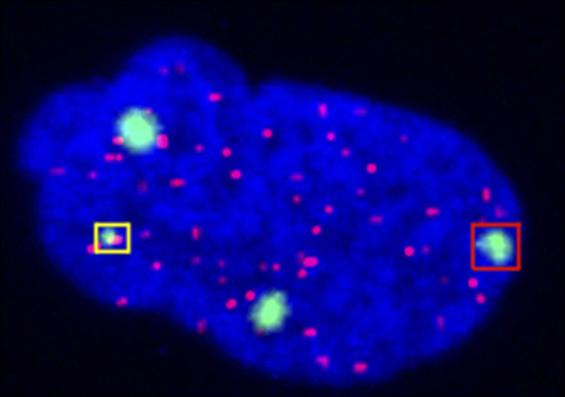
A team of Israeli researchers has discovered that mutations in STN1, a gene that helps maintain the ends of chromosomes, cause the rare, inherited disorder Coats plus syndrome. The study, "Mutations in STN1 cause Coats plus syndrome and are associated with genomic and telomere defects," will be published online ahead of issue July 18 in The Journal of Experimental Medicine.
Coats plus syndrome affects many tissues in the body, including the eye, brain, bone marrow, and gastrointestinal tract. The disease is a telomeropathy known to be caused by mutations in the gene encoding CTC1, a protein that helps maintain structures called telomeres that protect the ends of chromosomes. If telomeres are not maintained properly, cells lose their ability to divide and chromosomes can fuse together.
Led by Gideon Rechavi and Raz Somech of the Sheba Medical Center and Sara Selig of the Rambam Health Care Campus and the Technion Institute, the researchers identified two Palestinian Coats plus patients who did not have mutations in the CTC1 gene. Instead, the patients carried mutations in the gene encoding STN1, a protein that works together with CTC1 and another protein, TEN1, to maintain telomeres. Cells isolated from the patients had dysfunctional telomeres and a decreased capacity to divide.
To confirm that the mutations in STN1 were the cause of the Coats plus patients' symptoms, the researchers, in collaboration with David Wiest from the Fox Chase Cancer Center, knocked out the equivalent gene in zebrafish embryos. The engineered fish developed Coats plus-like symptoms, including a lack of red blood cells and the formation of dilated, fragmented blood vessels. This latter symptom was corrected using thalidomide, a potent inhibitor of blood vessel formation.
The researchers report that one of the two patients died as a result of massive gastrointestinal bleeding. However, they were able to partially control the second patient's gastrointestinal bleeding using thalidomide, exemplifying a successful "bed-to-bench-and-back approach." The researchers now plan to investigate exactly how mutations in STN1 cause the patients' symptoms. In addition to maintaining telomeres, the CTC1-STN1-TEN1 protein complex aids DNA replication across the entire genome, a process that was also defective in the patients' cells. "How much of the features can be attributed to telomere or genome-wide replication defects, or to other defects not related to DNA replication, are yet to be explored," the researchers say.
###
Simon, A., et al. 2016. J. Exp. Med. http://dx.doi.org/10.1084/jem.20151618
About The Journal of Experimental Medicine
The Journal of Experimental Medicine (JEM) features peer-reviewed research on immunology, cancer biology, stem cell biology, microbial pathogenesis, vascular biology, and neurobiology. All editorial decisions are made by research-active scientists in conjunction with in-house scientific editors. JEM provides free online access to many article types immediately, with complete archival content freely available online. Established in 1896, JEM is published by The Rockefeller University Press. For more information, visit jem.org. Follow us on Twitter at @JExpMed and @RockUPress.
Media Contact
Ben Short
[email protected]
212-327-7053
@RockUPress
http://www.rupress.org/





